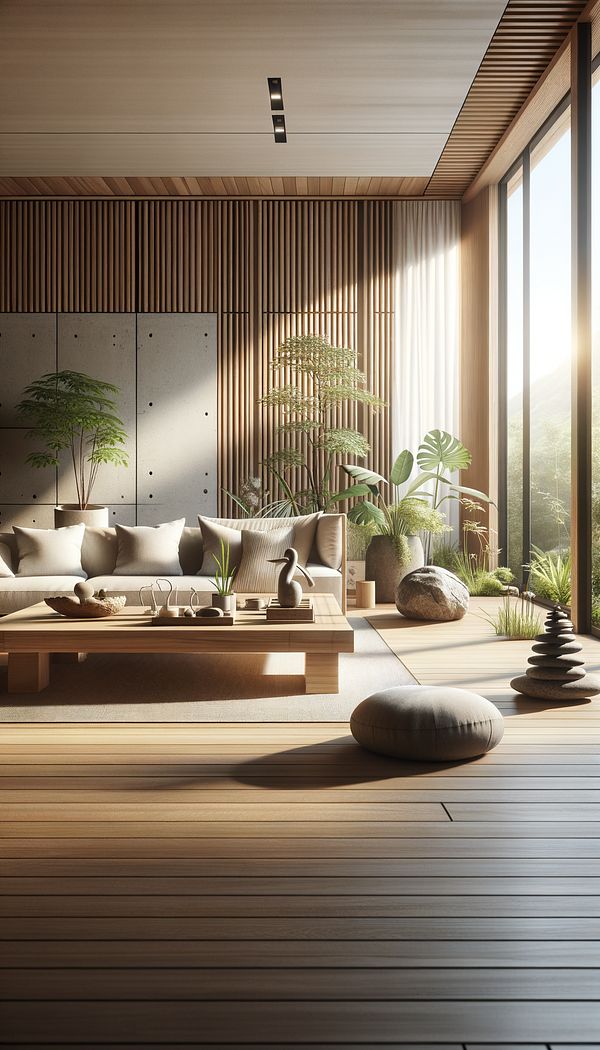What is Zen Design?
Zen Design is an approach to interior design that emphasizes simplicity, natural beauty, and harmony.
Description
Zen Design draws inspiration from the Japanese philosophy of Zen, which focuses on meditation, mindfulness, and living in the present. This design style aims to create spaces that inspire calm and tranquility through the use of minimalist layouts, natural materials, and a muted color palette.
In Zen Design, every element has a purpose and place, avoiding clutter and excessive decoration. The focus is on achieving balance and harmony between the indoor environment and the natural world outside. Furniture and decor items are chosen for their functionality as well as their aesthetic appeal, ensuring that they contribute to a serene and uncluttered space.
The inclusion of natural light, open spaces, and indoor plants are key features of Zen Design. These elements help to bring a sense of the outdoors inside, further enhancing the peaceful ambiance. Textures and materials are carefully selected to evoke a sense of calm and comfort, often featuring wood, stone, and soft fabrics.
Usage
Zen Design is often applied in living rooms, bedrooms, and spaces intended for relaxation or meditation, such as a home office or a dedicated meditation room. It's also widely used in spas, wellness centers, and boutique hotels that aim to provide a serene and relaxing experience for their guests.
FAQs
-
How can I incorporate Zen Design into my home?
To incorporate Zen Design into your home, start by decluttering spaces and opting for minimalist furniture. Choose a neutral color palette and natural materials. Incorporate elements like indoor plants, natural light, and water features to enhance the sense of calm.
-
What are the key elements of Zen Design?
Key elements of Zen Design include simplicity, minimalism, natural materials, muted colors, functional and uncluttered spaces, and the inclusion of elements that promote tranquility such as plants and water features.
-
Is Zen Design suitable for small spaces?
Yes, Zen Design is particularly well-suited for small spaces due to its emphasis on minimalism and functionality. It helps to create the illusion of a larger, more open space by reducing clutter and focusing on essential furnishings.
Practical Application
When incorporating Zen Design into a space, consider starting with a clean slate by removing unnecessary items and decorations. CChoose furniture that is both functional and aesthetically pleasing, opting for natural materials wherever possible. Soft textures and a neutral color palette can add warmth and serenity to the space. Introduce natural elements, like plants or a small water feature, to promote a calming atmosphere. Finally, ensure there's plenty of natural light and consider using soft, indirect lighting for the evenings.
-
Design Styles478 articles
-
Decorative Techniques322 articles
-
Space Planning & Layout134 articles
-
Materials & Textiles360 articles
-
Color & Patterns154 articles
-
CapitalIn interior design, capital refers to the topmost portion of a column.
-
Construction DrawingsConstruction drawings are detailed plans and drawings produced by architects and designers to guide the construction or renovation of a building.
-
Wabi-SabiWabi-sabi is a Japanese philosophy that finds beauty in imperfection and transience.
-
Squab CushionA squab cushion is a thick, upholstered, flat seat cushion.
-
Mortise & TenonMortise & Tenon is a type of joinery that involves fitting a projection (tenon) into a corresponding cavity (mortise) to create a stable, interlocking connection.
